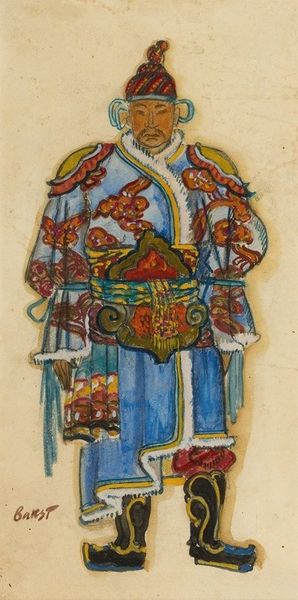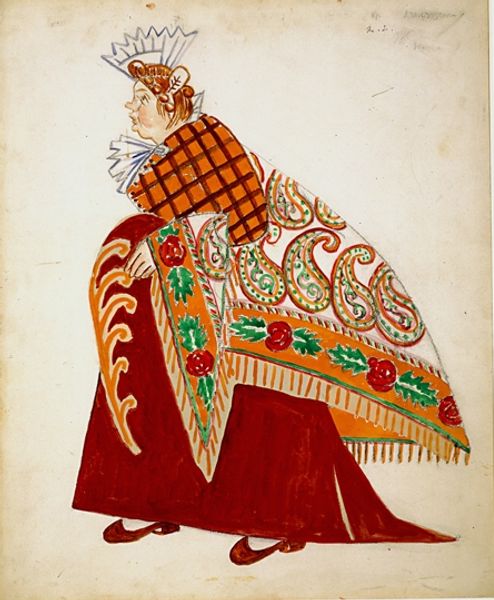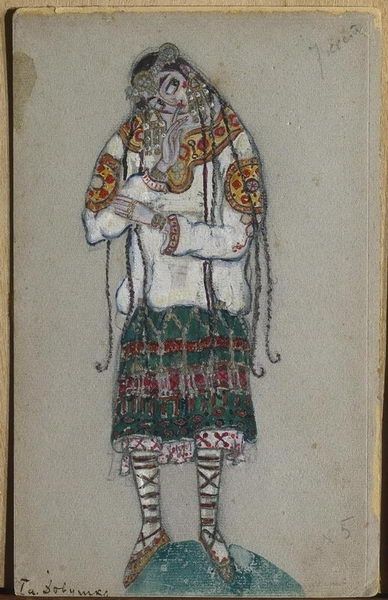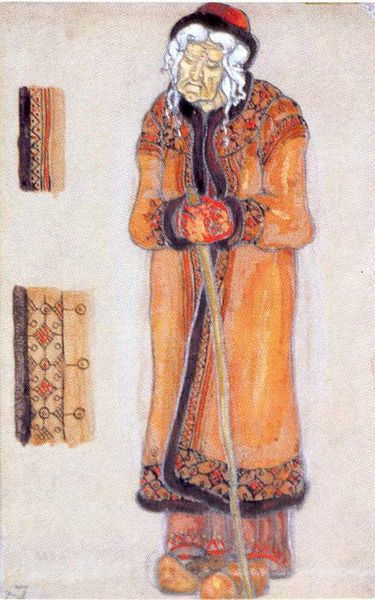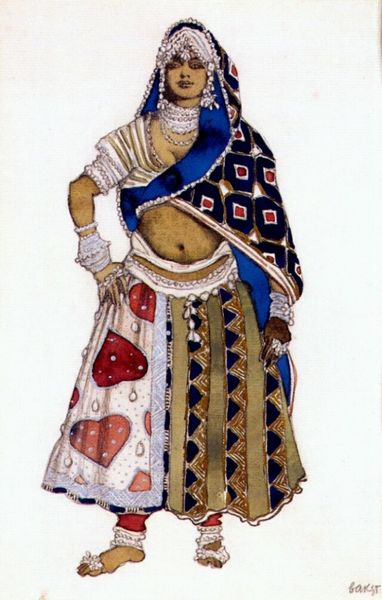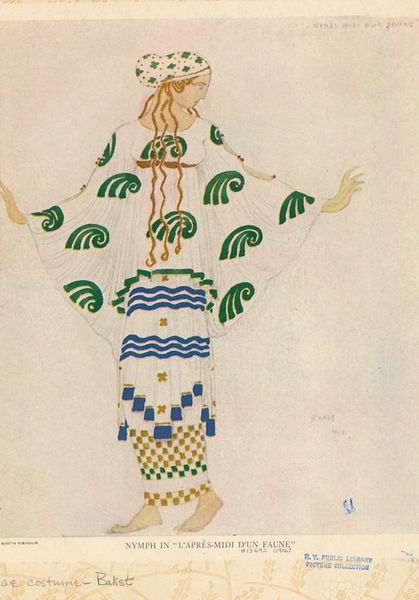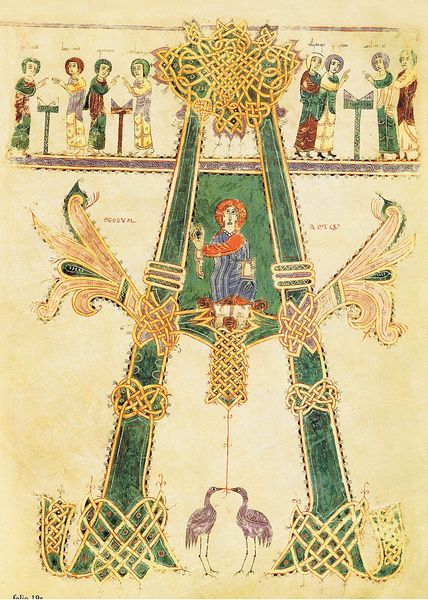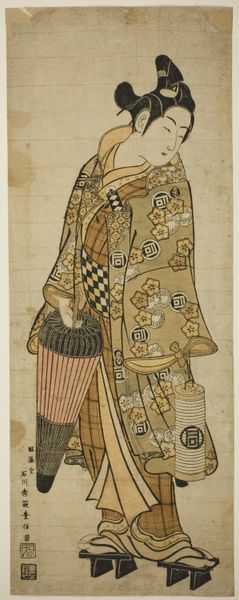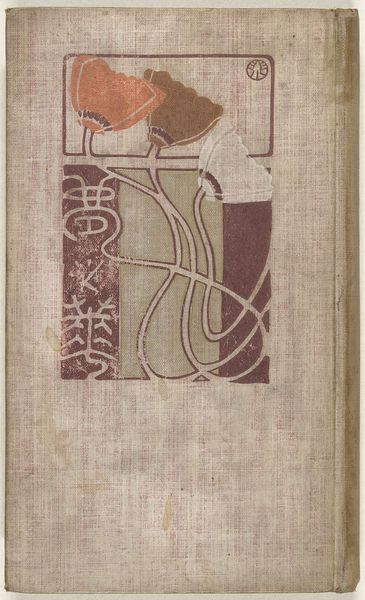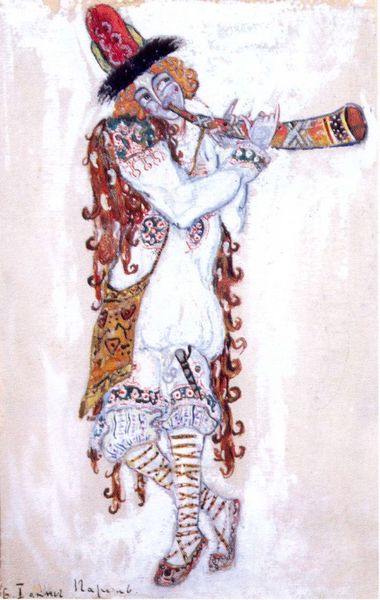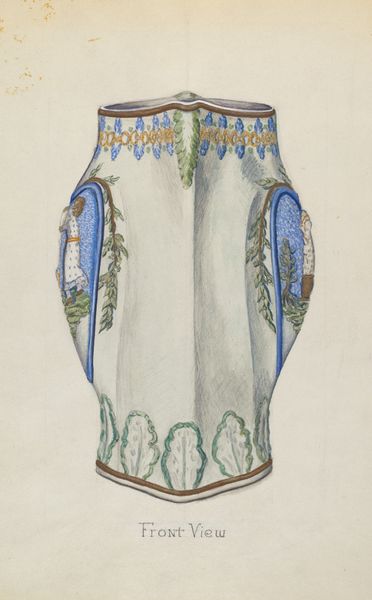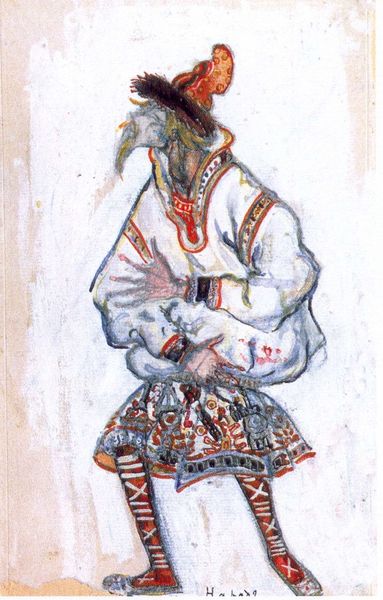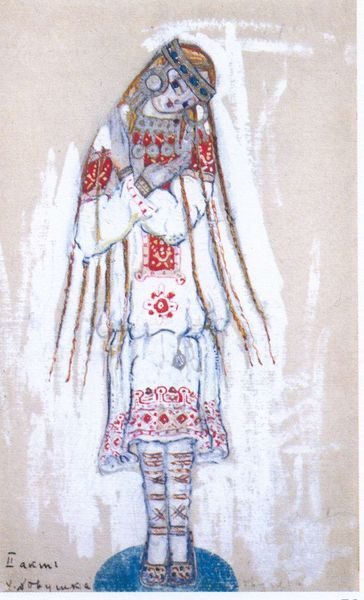
drawing, watercolor
#
drawing
#
oil painting
#
watercolor
#
coloured pencil
#
watercolour illustration
#
decorative-art
#
watercolor
Copyright: Public domain
Editor: This is Boris Kustodiev's "Tower," created in 1926. It appears to be made of watercolors, perhaps with colored pencil. It looks a little like a cake on a stand – playful, but also strange. What do you see in this piece? Curator: It's interesting that you mention cake. Given Kustodiev’s context in post-revolutionary Russia, the “Tower” might be viewed as a critique of pre-revolutionary opulence, with its cake-like structure being a symbol of excess, wealth, and the rigid hierarchies of the Tsarist regime. What is striking about the choice of color, the application of a palette that lacks deep shading, seems to add to an idea of decadence without the weightiness of the actual objects. Editor: That's a really interesting perspective. I didn't consider it that way, but I guess the pastel colors and the whimsical shape could be a subtle way to mock something that was once powerful and imposing. I notice it is raised upon legs, as if a specimen or curio for viewing. Is there a symbolism to that as well? Curator: Absolutely! Elevating the structure can also represent the distancing of the ruling class from the struggles of the common person. Also, watercolor as a medium lacks the grandeur of oil and tempera, so perhaps we can question why Kustodiev elected that medium in particular to depict such an iconographical artifact. Editor: So, it's not just a pretty picture, but a loaded commentary. What do you make of the orange flag or banner atop the structure? Curator: A flag is a potent signifier. Consider: is it signaling conquest or, in its diminutive size, surrender? Kustodiev lived through immense social upheaval, thus he was deeply aware of visual rhetoric. Art from this time challenges viewers to look past face value. Editor: I am so glad that you have encouraged me to consider this Tower in a different way. It really transforms the whole experience of looking at it. Curator: Yes, it encourages us to remember art never exists in a vacuum. By asking about its relation to the outside world, we may develop a new perspective about the role of both art and the artist in society.
Comments
No comments
Be the first to comment and join the conversation on the ultimate creative platform.
